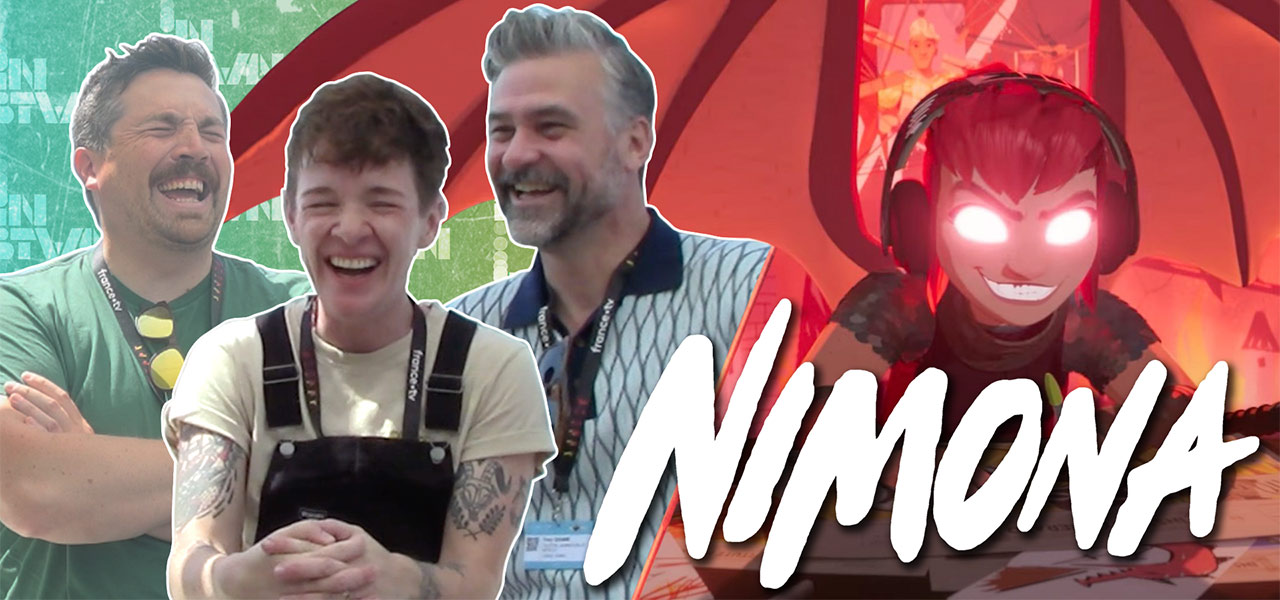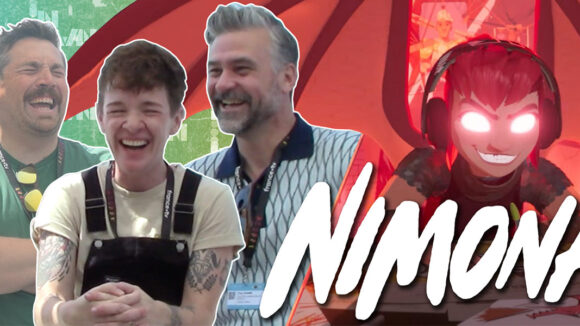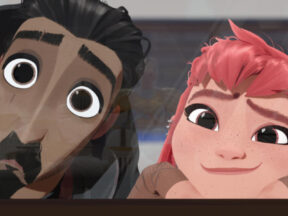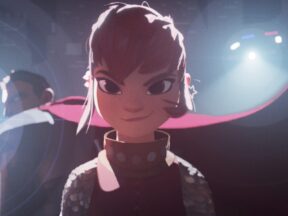

‘Nimona’ Directors, Creator Explain Why Blue Sky’s Shutdown Couldn’t Kill Their Film (Video Interview)
Seven years after Fox Animation first announced the sci-fi/fantasy epic Nimona, the oft-delayed animated feature will finally be released this week by Netflix.
The film world premiered at Annecy earlier this month, where Cartoon Brew’s exclusive online event partner INBTWN Animation tracked down directors Nick Bruno and Troy Quane as well as Nimona’s creator ND Stevenson.
Nimona was originally set up at Blue Sky Studios, but the film’s future was thrown into doubt when Disney purchased 20th Century Fox, the studio’s parent company. In February of 2021, Disney announced it was shutting down Blue Sky Studios and that production on Nimona had been halted.
It wasn’t until April 2022 that we officially learned that Nimona had been saved by Annapurna Pictures and Netflix, and that DNEG had taken over the animation production. In Annecy, Quane explained to us the mood around the Nimona camp when Disney shuttered Blue Sky:
Being shut down by giant parent studios is not typically one of those things you see coming, and usually harkens the end of all things… They stopped the movie, but they also shut down what was our home. Blue Sky Studios… there were 600 people there, employees, but that was also our family. I worked there for the better part of two decades. Those were the people that were at my wedding… That was devastating to put an end to that. But the thing that kept things going was this amazing character that ND created, Nimona.
For Stevenson, Nimona the character meant even more. It was his creation and represented something that he believed could benefit other viewers out there, both fans of the existing work and newcomers to the character:
What she was for me and what I hope she is for other people, is that your feelings don’t make you a bad person. Having big feelings and emotions and anger and fear and pain, those things don’t mean you’re broken or that you’re a danger to other people. You can feel those things and you can believe in yourself, and you can ask for help and receive help, and you deserve to receive help.
Nick Bruno agreed with Stevenson, and felt that Nimona’s relatability was one of the main reasons that his team was unwilling to let the project die:
When this movie was shut down, it was important that this was something that needed to get into the world. That this was a movie that was gonna be unlike anything [else]. Kids need to see that kind of representation out there. It gave us the motivation and energy to keep pushing even though we had no idea what we were doing.
Nimona is equal parts sci-fi epic and medieval fantasy, and the film’s characters, art, and architecture needed to represent that. So too, according to Quane, did the film’s animation approach:
This two-and-a-half-d representation is a nice nod to… we’re making the movie in cg but with a nice nostalgic wink to the 2d days of yore, and also goes back to the graphic novel roots. It felt like a sort of clever, beautiful way to marry the future and the past.
One thing that may not be immediately clear but is unmissable once you’ve seen it is that characters, props, and architecture in the foreground of each shot are more detailed than those in the background. Quane explained why, telling us:
The further we are away from something, the more of a generalized representation it becomes. That really is that idea of, the closer we allow ourselves to get to other people, the more we get to see what makes up the full self. We get to see all those little details that make you an individual. Whereas the more we keep people at arm’s length, the more they become this sort of label, a general shape and graphic of what we assume they are.
For more insights into the production of Nimona check out the full INBTWN video, linked above.



